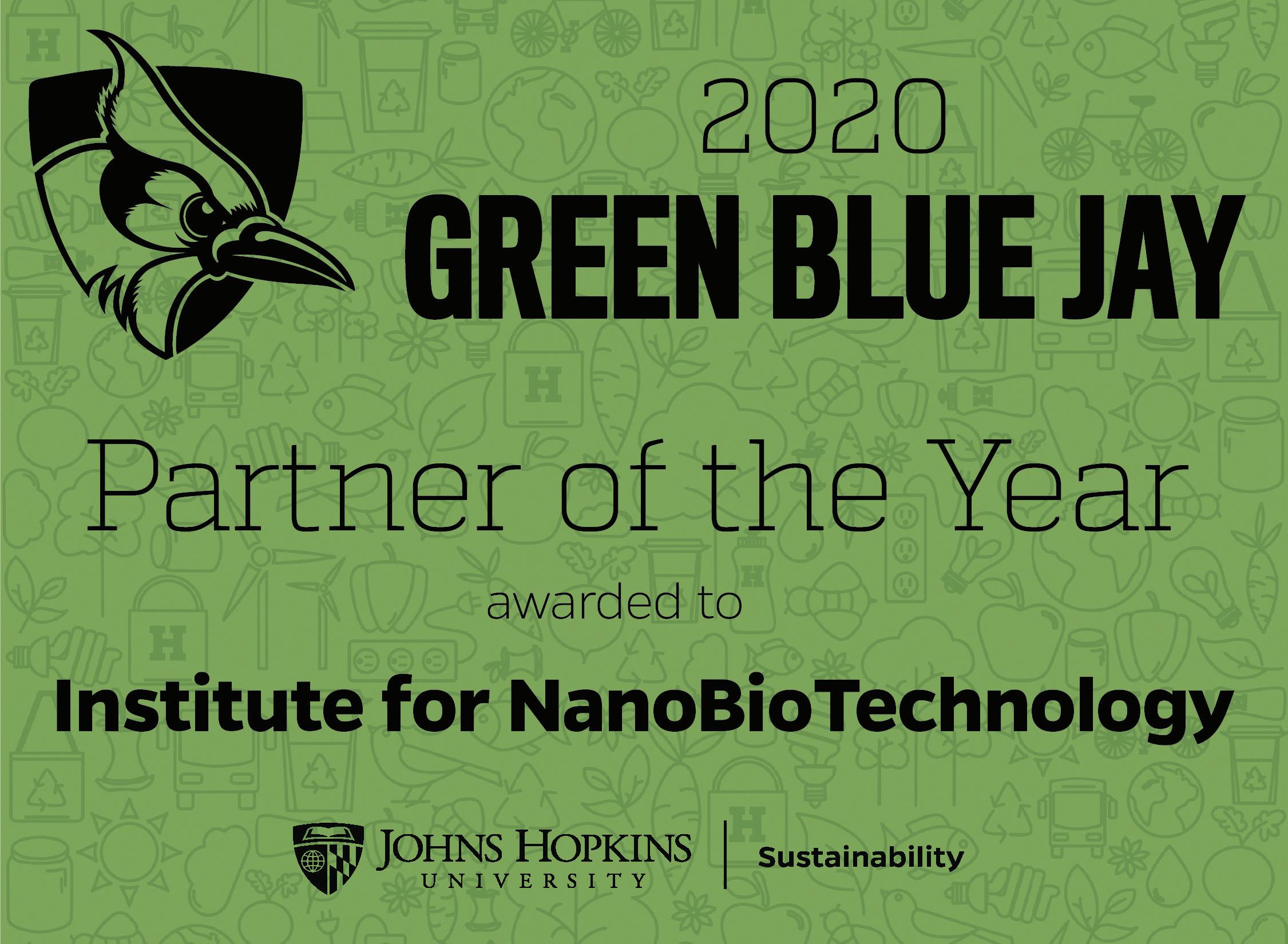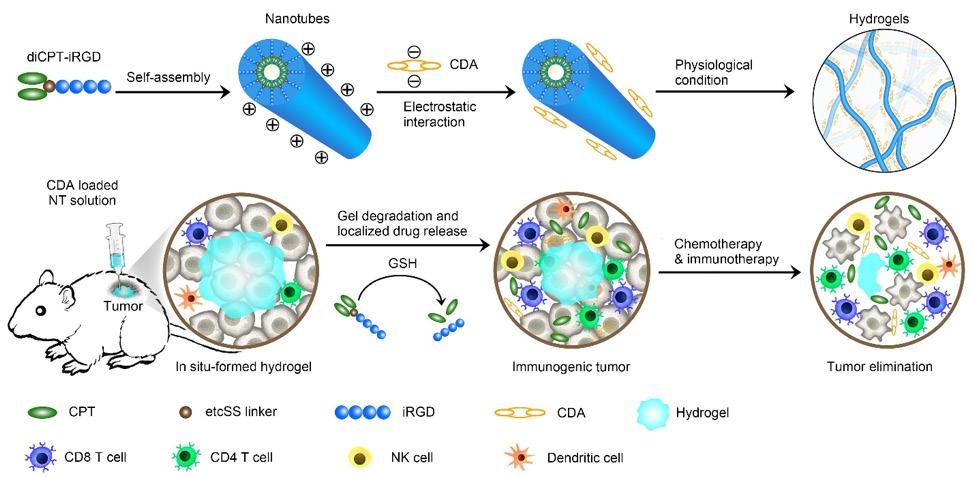Self-Assembling Hydrogel for Better Cancer Immunotherapy By Gina Wadas
The illustration depicts the hydrogel’s design, the delivery method, and immune response.
The immune system uses various means to detect invaders such as infectious bacteria and viruses, as well as non-infectious ones, such as cancer. Some cancers, however, not only can evade immune surveillance, but they can even switch off the immune system. Cancer immunotherapies designed to assist the immune system have proven beneficial, even for patients in advanced stages and with metastatic cancers. These therapies work by either stimulating the immune system’s normal defenses or using lab-made materials that mimic immune system functions. However, for patients with cold tumors— those which lack immune cells and other cancer fighting molecules—the effectiveness
6 research
of such immunotherapies can be low. To help these patients, a team led by Honggang Cui, a core faculty member at the INBT and associate professor in the Department of Chemical and Biomolecular Engineering, investigated a new approach: using a known chemotherapeutic drug to activate the STING (stimulator of interferon genes) pathway, a cell signaling pathway that stimulates the immune system. The drug, camptothecin (CPT), is often administered intravenously: a delivery method that can cause off-target effects, creating side effects. IV delivery also does not allow for longterm release of the drug, so the contents lose potency before reaching the tumor. To address this, the team converted CPT into a self-as-














